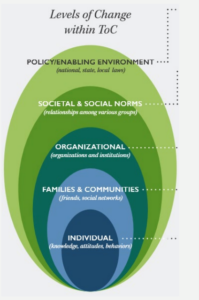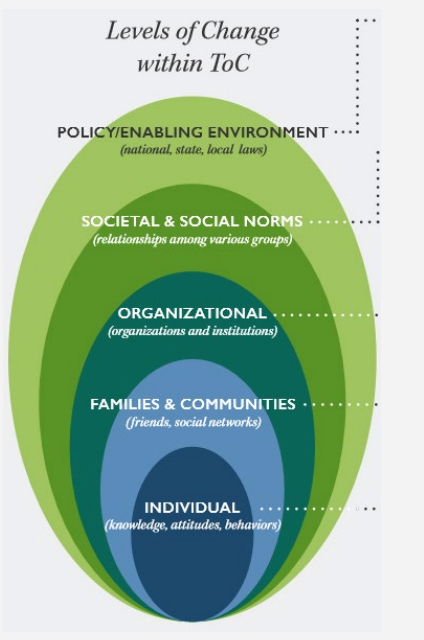The TAAP: Transforming Agency, Access, and Power initiative is a resource of analytical frameworks and practical tools for practitioners, organizations, and policymakers looking to integrate social inclusion into program design, implementation and learning. Of these practical tools is the TAAP Toolkit and Guide for Inclusive Development, which aims to ensure that social inclusion and inclusion sensitivity are integrated into every phase of the project life cycle. It features an introduction and an overview of the TAAP initiative, a section on the four phases of TAAP, a segment on the cross-cutting sections of TAAP, three annexes including a Terms of Reference (ToR) template for social inclusion analysis, and a one-stop tool shop with downloadable worksheets, such as the stakeholder analysis matrix.
In the overview, the toolkit elaborates on the TAAP Theory of Change (ToC) and the Levels of Change within ToC, adapted from Urie Bronfenbrenner’s social ecological model.
Achieving the inclusive world envisioned in the United Nation’s 2030 Agenda for Sustainable Development requires radically changing the agency, access and power of those people and groups who control resources and power, and those who are marginalized or excluded entirely.

The TAAP ToC posits that expanding the agency, access, and power of historically marginalized people requires tackling entrenched norms, institutions, and power structures. It assumes that the intervention must first seek to effect change at different levels of responsibility. Similarly, Results-Based Protection emphasizes starting with the experience of the affected population and engaging multiple actors within and outside the humanitarian community at multiple levels to achieve a reduction of risk.
